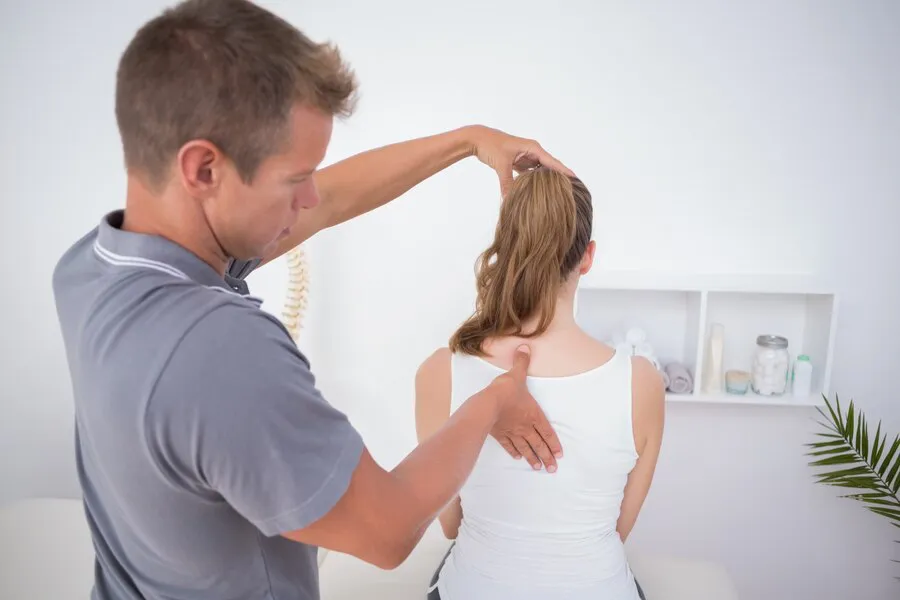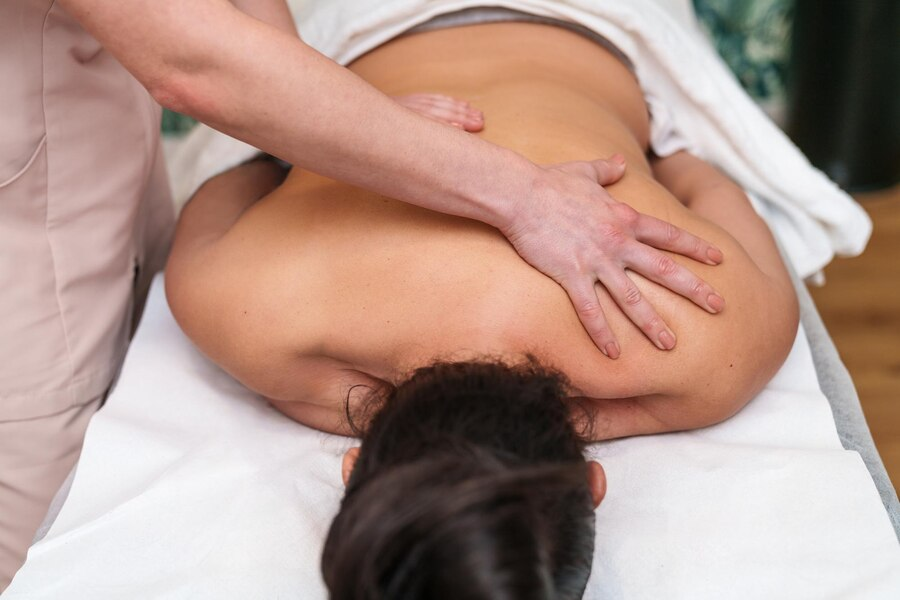When we think of healing, it’s often physical injury or illness that comes to mind. But our bodies are intricate systems, where muscles, nerves, and joints work in harmony to keep us functioning optimally. Neuromuscular re-education is a fascinating approach that delves into this harmony, aiming to correct dysfunctional patterns and restore balance. In this blog, we’ll explore the concept of neuromuscular re-education, its benefits, techniques, and how an integrative approach can enhance the healing process.
What is Neuromuscular Re-education?
Neuromuscular re-education is a therapeutic process designed to improve the communication between the nervous system and muscles. Essentially, it involves retraining the brain and body to work together more effectively. This method is commonly used to address issues stemming from injury, surgery, or neurological disorders.
The idea behind neuromuscular re-education is rooted in the principle that the nervous system can be retrained to correct faulty movement patterns. These patterns might develop due to poor posture, repetitive strain, or even after a prolonged period of inactivity. By focusing on the retraining of motor control, neuromuscular re-education aims to enhance functional movement and alleviate pain.
The Science Behind Neuromuscular Re-education
At the core of neuromuscular re-education is the understanding that muscles and nerves work in a feedback loop. The nervous system sends signals to muscles to produce movement, and in turn, muscles provide feedback to the nervous system about their activity. When this loop is disrupted—whether due to injury, illness, or poor habits—movement can become inefficient or even painful.
The therapeutic process typically involves exercises and techniques that aim to reestablish proper neural pathways. This might include strengthening weakened muscles, improving coordination, and enhancing proprioception (the body’s sense of its position in space). By retraining the nervous system, neuromuscular re-education helps restore balance and functionality to the affected areas.
Techniques Used in Neuromuscular Re-education
Neuromuscular re-education encompasses various techniques, each tailored to address specific needs. Here’s a closer look at some of the common methods used:
Functional Movement Training
Functional movement training focuses on improving the quality of movement patterns that are essential for daily activities. Exercises are designed to mimic real-life movements, such as bending, lifting, or reaching, to help individuals perform these actions more efficiently and with less pain.
Proprioceptive Training
Proprioceptive training aims to enhance the body’s awareness of its position in space. This type of training often involves balance and coordination exercises that help individuals improve their stability and prevent falls.
Postural Re-education
Postural re-education focuses on correcting poor posture that may contribute to pain or dysfunction. Techniques may include exercises that strengthen postural muscles and stretches that address tight areas contributing to poor alignment.
Motor Control Exercises
Motor control exercises are designed to improve the coordination and control of specific muscle groups. These exercises help retrain the brain’s ability to properly activate and coordinate muscles, which is essential for efficient movement.
Manual Therapy
Manual therapy involves hands-on techniques to mobilize and manipulate tissues. This can help reduce pain, improve range of motion, and facilitate better muscle function.

Integrative Approach to Neuromuscular Re-education
An integrative approach to neuromuscular re-education goes beyond traditional methods by combining various therapies and techniques to address the whole person. This approach recognizes that healing is not just about treating symptoms but also about understanding and addressing the underlying causes of dysfunction.
Combining Therapies
Integrative neuromuscular re-education often incorporates multiple therapeutic modalities. For instance, combining physical therapy with chiropractic adjustments or acupuncture can offer a more comprehensive treatment plan. Each therapy targets different aspects of the body’s function, creating a synergistic effect that can enhance overall healing.
Holistic Assessment
A holistic assessment considers not just the physical symptoms but also the emotional, psychological, and lifestyle factors that may influence the healing process. By evaluating these factors, practitioners can create a more personalized treatment plan that addresses the root causes of dysfunction.
Patient Education
Educating patients about their condition and the role of neuromuscular re-education is a key component of an integrative approach. When patients understand how their body works and how certain movements or habits affect their health, they are more likely to engage actively in their recovery process.
Lifestyle Modifications
An integrative approach often includes recommendations for lifestyle modifications that support overall health. This might involve changes in diet, exercise routines, stress management techniques, and ergonomic adjustments to daily activities. These modifications can complement the effects of neuromuscular re-education and contribute to long-term wellness.
Benefits of Neuromuscular Re-education
The benefits of neuromuscular re-education extend beyond the immediate relief of symptoms. Here’s a closer look at how this approach can positively impact overall health and well-being:
Improved Movement Efficiency
By retraining the nervous system and muscles, neuromuscular re-education helps improve movement efficiency. This means that everyday tasks become easier and more comfortable, reducing the strain on the body and preventing future injuries.
Enhanced Pain Management
Many individuals turn to neuromuscular re-education for pain management. By addressing dysfunctional movement patterns and improving muscle coordination, this approach can help alleviate chronic pain and reduce reliance on medication.
Increased Strength and Flexibility
Neuromuscular re-education often involves exercises that build strength and flexibility. This can lead to improved physical fitness and better overall health, supporting a more active and fulfilling lifestyle.
Better Posture and Balance
Improving posture and balance is a key focus of neuromuscular re-education. Better posture can reduce the risk of developing musculoskeletal issues, while improved balance can prevent falls and enhance overall stability.
Faster Recovery from Injury
For individuals recovering from injury or surgery, neuromuscular re-education can accelerate the healing process. By restoring proper movement patterns and muscle function, this approach helps individuals return to their normal activities more quickly and safely.
Getting Started with Neuromuscular Re-education
If you’re considering neuromuscular re-education as part of your healing journey, here’s how to get started:
Consult a Qualified Practitioner
Seek out a qualified practitioner who specializes in neuromuscular re-education. This may include physical therapists, chiropractors, or other healthcare professionals with expertise in this field.
Undergo a Comprehensive Assessment
A thorough assessment will help identify the specific issues affecting your movement and function. This assessment will guide the development of a personalized treatment plan tailored to your needs.
Engage in the Therapeutic Process
Active participation in the therapeutic process is essential for success. Follow the prescribed exercises, attend therapy sessions regularly, and communicate openly with your practitioner about your progress and any concerns.
Incorporate Lifestyle Changes
Support your neuromuscular re-education efforts by making positive lifestyle changes. This might include adopting healthier habits, improving posture, and managing stress effectively.
Experience Whole-Body Healing through Integrative Approaches
Whole-body healing requires a comprehensive approach that addresses both the symptoms and the underlying causes of dysfunction. Integrative approaches, such as neuromuscular re-education, offer a holistic solution by focusing on the intricate interplay between muscles, nerves, and movement patterns. By incorporating various therapeutic techniques, this method aims to restore balance and optimize bodily function, leading to a more harmonious and effective recovery process.
Neuromuscular re-education integrates multiple therapies, including functional movement training, proprioceptive exercises, and manual therapy, to provide a well-rounded treatment plan. This holistic approach not only alleviates pain and improves movement efficiency but also supports overall wellness by addressing the root causes of physical issues. Embrace this integrative approach to achieve lasting health and vitality.
Restore Harmony in Your Body with Neuromuscular Therapy
Neuromuscular therapy is designed to bring harmony back to your body by re-establishing proper communication between the nervous system and muscles. Through targeted exercises and techniques, this therapy retrains your body’s movement patterns, helping to correct imbalances and alleviate discomfort. The goal is to restore functional movement and enhance overall physical performance, contributing to a more balanced and pain-free life.
By focusing on both the immediate symptoms and underlying issues, neuromuscular therapy provides a comprehensive solution for those struggling with movement-related problems. Integrating various therapeutic methods ensures a personalized approach that addresses individual needs, promoting long-term healing and improved quality of life. Discover how neuromuscular therapy can restore harmony and support your journey to optimal health.
Conclusion
Neuromuscular re-education offers a powerful, integrative approach to healing by addressing both the symptoms and root causes of dysfunction. By focusing on the relationship between the nervous system and muscles, this therapy helps restore balance and optimize movement efficiency, leading to improved overall wellness. Integrative Chiropractic in Overland Park combines various therapeutic techniques to provide a holistic treatment plan tailored to individual needs. The goal is to support the recovery journey and enhance quality of life through personalized care. Discover the benefits of neuromuscular re-education and how it can bring harmony back to the body. For more information, contact 913-451-7500.

